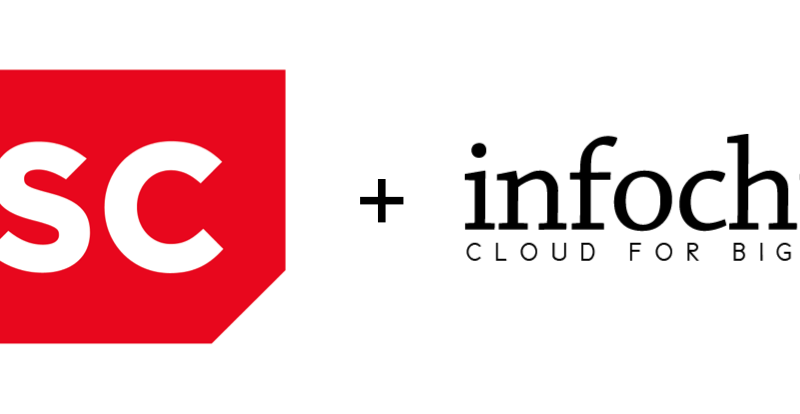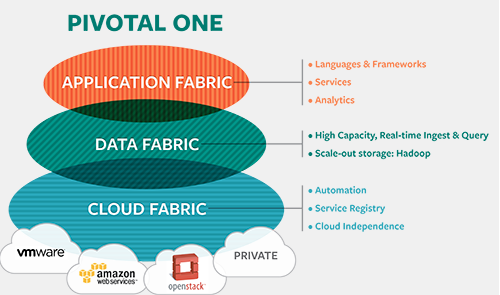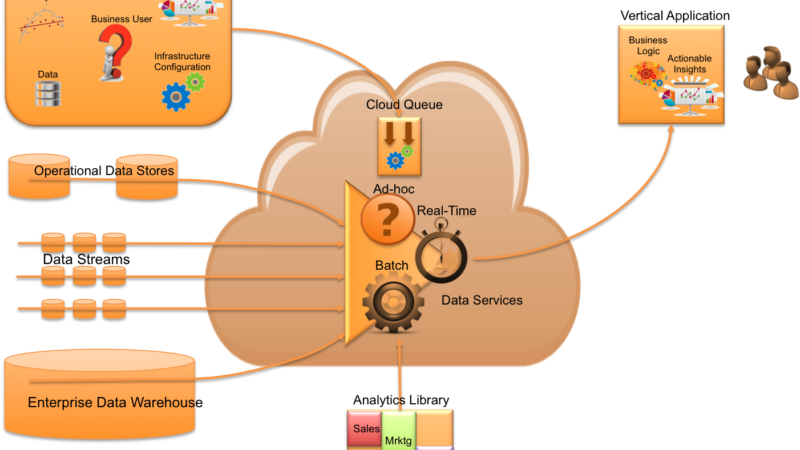The Reality Of Public Cloud
Market Overall
According to a new report by the IDC, public IT cloud spending will expand from $21.5 billion in 2010 to $72.9 billion by 2015. IDC’s study forecasts cloud services driving growth in the IT industry over the next 25 years.
The study found IT cloud services growing at more than four times the rate of the worldwide IT market (worldwide IT spending will be $1.6 trillion in 2011, an increase of 5.7% over 2010). The research forecasts one of every $7 spent on packaged software, service and storage offerings in 2015 will be related to the public cloud model.
Market Segments
IDC defines public IT cloud services as “those offerings designed for, and commercially offered to, a largely unrestricted marketplace of potential users.”
IDC segments this market into the following broader categories:
- Storage Hardware for cloud services
- Server Hardware for cloud services
- Infrastructure Software for cloud
- Application Development & Deployment Software for cloud
- Cloud Applications (IaaS, PaaS, SaaS)
46% of the net new growth in overall IT spending ($1.5Trillion in 2010, per IDC) will come from these segments.
SaaS will account for roughly 75% of public IT spend (hardware-oriented spend in storage and servers as well as infrastructure software and app dev/deployment software will be largely driven by SaaS providers). So breaking SaaS down further by definition is important.
SaaS Categories
System infrastructure software includes secondary markets such as system and network management software, security software, storage management software, and system software, delivered as SaaS services.
Application development and deployment software includes secondary markets such as application development software, application life-cycle management software, enterprise mashup and portal software, information management and data integration software, and middleware and business process management software, delivered as SaaS services.
Applications include secondary markets such as collaborative applications (e.g., messaging, conferencing, and team collaboration software) and business applications (e.g., CRM, ERP, financial, HCM, PLM, and SCM), delivered as SaaS services.
Ideally, Robert Mahowald’s traditional enterprise software taxonomy will be made available to enterprise via on-demand cloud solutions. Lets review the past size of each of the SaaS market segments as IDC categorizes categorizes them (by 2009 revenue):
 SaaS vendor examples include well-known vendors such as Salesforce.com, Google Apps, Oracle (Siebel CRM on Demand), Microsoft Dynamics CRM Online, and Citrix Online. Lets look at specific examples in each of these segments (hopefully we can find a few publicly traded companies which present a little more visibility).
SaaS vendor examples include well-known vendors such as Salesforce.com, Google Apps, Oracle (Siebel CRM on Demand), Microsoft Dynamics CRM Online, and Citrix Online. Lets look at specific examples in each of these segments (hopefully we can find a few publicly traded companies which present a little more visibility).
Content Management (CMS) SaaS
CMS SaaS is a broad category facilitating the enterprise in the development, deployment, and management of web content (web pages, photos, video, audio).
Bridgeline and Blackbaud are two good examples in this list. Ridgeline’s SaaS unifies content management, analytics, e-commerce, and e-marketing capabilities enabling business users to enhance and optimize their Web properties.
Blackbaud has branched out into many categories for nonprofit organizations worldwide. Its solutions include a software application to manage nonprofit organizations constituent relationship management (CRM) activity; an Internet marketing and communications tool to build interactive Web sites and manage email marketing campaigns; an accounting application; a fund accounting solution; a student information management system; a ticketing management solution; an integrated campaign planning application for managing direct marketing campaigns with various media and channels; and a software product to launch and manage online event fundraising Websites.
CRM SaaS
This list is short (not including the many small verticals being serviced by on-demand CRM services):
- Aplicor
- MS Dynamics CRM
- NetSuite
- Oracle OnDemand
- Rightnow
- Salesforce.com
- SAP Business ByDesign
- SugarCRM
Financial Accounting & Payroll SaaS
Many of the full turkney HR/HCM solutions include financial accounting. In addition, all the traditional payroll processing firms have a hosted service.
- 24SevenOffice
- Acumatica
- BIG4books
- inniAccounts
- Intacct
- Mint.com
- NetSuite
- NolaPro
- Outright
- Softline Pastel
- Xero
HR/HCM SaaS
A host of categories exist here including hiring, retnetion, talent management, performance management, and turnkey overall HCM solutions:
Supply Chain Management SaaS
- Ariba
- Descartes
- e2open
- GXS (RollStream)
- Ketera
- LeanLogistics
- SAP SCM ByDesign
- WeSupply
Collaboration SaaS
Including email, web conferencing, team applications, instant messaging, project management…a few companies focused on improving enterprise collaboration via SaaS include:
Business Intelligence SaaS
Pure-play SaaS vendors include:
System Infrastructure Software SaaS
This could include Data Encryption as a Service, Logging as a Service, Security as a Service, or ITIL as a Service with some examples such as:
- Cybercloud
- Loggly
- Silvertail Systems
- Sumo Logic
- MetaFlows
- ServiceNow
- FrontRange
- Kaseya
- NewScale (CISCO)
App Dev/Deployment
These tend to be more in line with PaaS (which services the application community in development and deployment acceleration):
- Azure
- Amazon Beanstalk
- BungeeConnect
- EngineYard
- fogPHP
- Force.com
- dotcloud
- Heroku
- Opsource
- Scala
- SensorLogic
SaaS Company Performance
While there are plenty of public companies with cloud apps offerings, Don Fornes, Founder & CEO, Software Advice, pulled together an insightful review of ten SaaS “pure plays” that gives us a clear picture into the health of the cloud application business model. With Don’s permission, I review his perspective on the following ten SaaS players:
- Salesforce.com (SFDC) – CRM / Salesforce Automation
- blackbaud (BLKB) – nonprofit
- concur (CNQR) – employee spend management
- Netsuite (N) – Accounting / ERP
- Kenexa (KNXA) – Hiring/Retention
- Taleo (TLEO) – Talent Management
- SuccessFactors (SFSF) – Performance Mgmt
- Ultimate SW (ULTI) – HCM (human capital mgmt)
- Rightnow (RNOW) – Customer experience
- SABA – LMS
Quarterly Revenue ($ Millions)
As we expect, Salesforce.com (represented by CRM) leads the segment in revenues.
SFDC has a 35% year-over-year growth rate with $127 million in new quarterly revenue. Note that this is larger than the total quarterly revenue of all other nine companies combined. Other standout performances came from SuccessFactors (SFSF) and Kenexa (KNXA), which grew 54% and 51% year over year, respectively.
Quarterly Operating Income or Loss
Despite consistent revenue growth, publically-traded cloud apps companies are not yet raking in the dough. Half of this universe of companies remains unprofitable. Meanwhile, those companies that are profitable are turning in rather meager operating margins. This, of course, reflects a deliberate strategy to invest heavily in growth. Cloud apps companies and their investors see this as a “go big or go home” opportunity and have decided that top-line growth is more important than near-term margins.
SaaS Revenue by Application Category
Customer relationship management (CRM) represented 57% of all revenue amongst our public universe. Of course, that results from Salesforce dominating the revenue composition. At the same time, it demonstrates that the cloud has not gained nearly as many converts amongst enterprise resource planning (ERP) buyers.
The first apps to move to the cloud were sales force automation, expense management, and some human resources apps. While these are not simple apps, their functionality could be replicated on the web more easily and the users of these systems were open to cloud-based systems. ERP, call center, supply chain management, business intelligence and other apps present a bigger challenge in the cloud, but technology has now evolved such that these apps can now live in the cloud. As a result, we expect to see cloud app adoption grow considerably in the next couple years.
Approximate Customer Count
Salesforce also leads the universe with 97,000 customers. However, it’s important to note that Salesforce has a huge base of small and mid-size organizations. Peers like RightNow (RNOW) and the human resources SaaS companies tend to sell to larger organizations and therefore have smaller customer counts. In aggregate, this universe of publically traded SaaS vendors has over 160,000 customers. These customer counts are more precise for some companies than for others, depending on how trasparent they are in reporting customer counts in their quarterly releases.
The simplicity of the cloud app model allows these companies to address a dramatically larger market than traditional on-premise systems.
Average Annual Subscription Value
This chart is the inverse of the customer count chart above; companies with fewer customers are targeting larger enterprises. This is especially true for the cloud HR companies like Ultimate Software (ULTI), SuccessFactors, Saba (SABA) and Taleo (TLEO), all of which are targeting larger customers. The chart also illustrates Salesforce’s smaller deal sizes.
Market Capitalization ($ Billions)
The universe of ten public cloud app vendors have earned, in aggregate, a market capitalization of over $31 billion. Salesforce represents roughly 57% of that valuation. Most of these companies now have a market cap of over $1 billion.
Market Capitalization / Revenue Run Rate
While Salesforce has earned a marketcap multiple of 8.5x revenue, both NetSuite (N) and SuccessFactors enjoy higher multiples. The SuccessFactors multiple can be explained by its higher growth rate (54%), but the reasons behind NetSuite’s ~11x multiple are a little less obvious. We believe that investors are assuming that cloud apps will soon be adopted broadly in the ERP market, and are betting on NetSuite as a prime beneficiary of that activity. So, they are paying a premium multiple today for expected growth tomorrow.
Revenue Growth Rates and Multiples
This scatter plot allows us to visualize how each company’s valuation (market cap / revenue run rate, again) compares to its year-over-year growth. Companies who are on the right side of the chart are getting a higher valuation relative to their growth rate. This implies that investors are feeling better about these companies’ momentum and future prospects. NetSuite sits at the far right, which again implies the expectation of a bright future for this cloud ERP leader.
Year-Over-Year Change in Share Price
It’s been a good year for cloud app investors. All ten of these companies have seen their share price increase over the last twelve months. All but two of them have outpaced the appreciation of the Nasdaq market index, which was up about 26% in the last year. NetSuite’s 126.62% share price appreciation tops our chart. It appears that investors’ enthusiasm for the company has come about, or at least accelerated, recently.
See here for Don’s original report.














One thought on “The Reality Of Public Cloud”
Comments are closed.